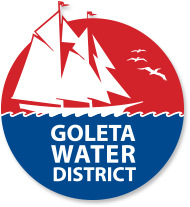The Goleta Valley enjoys a semi-arid climate with frequent droughts followed by moderate to heavy rainfall. Carefully managing supply and demand, and using a variety of water sources is critical to meeting customer needs in this environment.
With four distinct sources, how does the District determine how much of each is needed to serve customers?
The answer is water supply planning.
First, the District looks at supply and demand. Up-to-date information on water production and usage, and anticipated available supply are calculated for a 12 and 24 month period for each our sources: This includes surface water, groundwater, imported state water, and recycled water. Factors like weather, lake levels, existing agreements with other water providers, and allocations made by the state and federal governments are all considered. Economic conditions and historical usage patterns from the previous ten years are considered along with more recent customer behavior to make projections.
The second tool of water supply planning is demand management, or working with customers to make sure the water needs of the community don’t exceed available supplies.
A key piece of this approach is conservation, which was a critical element of the District’s drought management strategy. Water-thrifty customers in the Goleta Valley have been statewide leaders in conservation, consistently using fewer gallons per person than the average Californian.
Access to four diverse water supply sources coupled with the community’s commitment to conservation allows the District to meet the water demands of 87,000 residential, commercial, and agricultural customers in the Goleta Valley. The District remains actively engaged in planning to ensure sufficient supplies remain available into the future, whatever the weather may bring.
